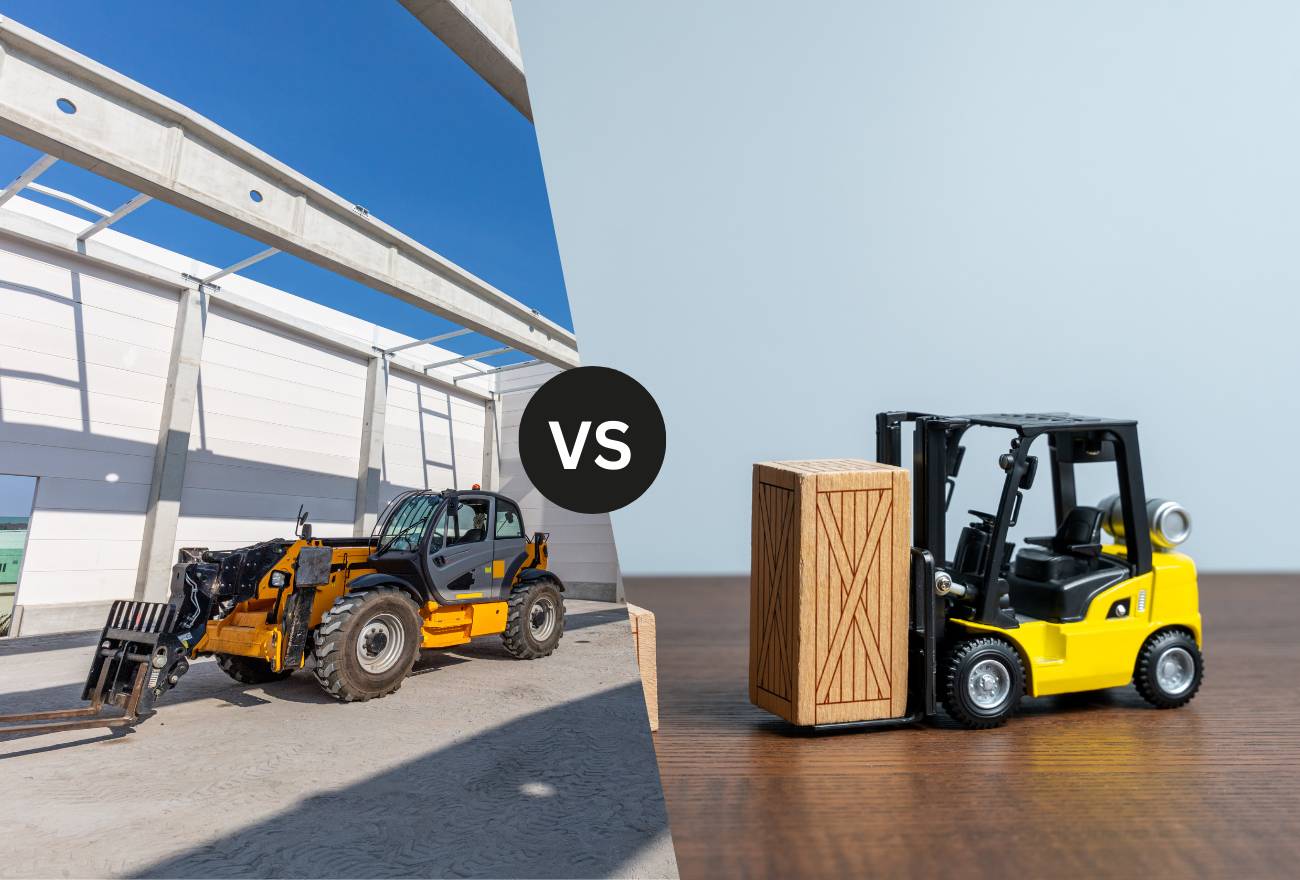
Forklifts and telehandlers are two of the most often utilized pieces of material handling equipment. Each has special qualities that enable them to be used for various purposes. To assist you in selecting the best machine for your requirements, we'll go over the main distinctions between these two adaptable devices in this blog.
A Telehandler: What Is It?
In the heavy-duty equipment market, telehandlers are a well-liked category with uses in farming and construction. Tasks like material handling, transporting or positioning bales, pallets, etc. are frequently completed using it.
What is a forklift?
A forklift is a compact industrial vehicle with power that is utilized for short-distance material lifting and transportation. Warehouses, distribution centers, and storage facilities frequently use forklifts.
Important Variations
1. Expanding Range and Capacity
When opposed to forklifts, telehandlers often have a better lifting capability and can reach higher altitudes. Standard forklifts can raise objects up to fifteen to twenty feet, but depending on the type, telehandlers can move objects up to thirty feet or more. Telehandlers are therefore perfect for jobs requiring the lifting of objects onto high shelves or rooftops.
2. Flexibility
The adaptability of telehandlers is well known. They are capable of much more than merely lifting because of their numerous attachments, which include winches, pallet forks, and buckets. Because different attachments may be swapped out depending on the task at hand, this makes them indispensable on construction sites. Although they are quite flexible, forklifts are usually only used for lifting and transporting objects.
3. Stability and Handling
Forklifts are designed for stability, especially when carrying heavy loads. Their low center of gravity allows them to navigate tight spaces with ease. Telehandlers, although stable, can be more challenging to operate due to their height and reach, especially when extended. Operators must be trained to manage the potential for tipping when handling heavy or elevated loads.
4. Terrain Capabilities
Telehandlers are built to handle rough terrains, making them suitable for outdoor construction sites or agricultural fields. They typically come with four-wheel drive and larger tires to provide better traction on uneven surfaces. Forklifts, especially those designed for indoor use, may struggle in such conditions unless they are specifically designed for outdoor applications.
Which to Choose When?
The decision between a forklift and a telehandler ultimately comes down to your particular requirements. A telehandler is perhaps a better choice if your projects need you to navigate difficult terrain or lift goods to considerable heights. However, a forklift is more useful and effective for simple lifting and moving operations in small areas.
Both telehandlers and forklifts play crucial roles in material handling across various industries. Understanding their key differences can help you make an informed decision on which equipment is best suited for your operations. Whether you need the reach of a telehandler or the maneuverability of a forklift, each machine has its strengths that can enhance your productivity.
For more insights on material handling equipment and to explore your options, check out MotorBazee!
-
Categories
-
Follow us On